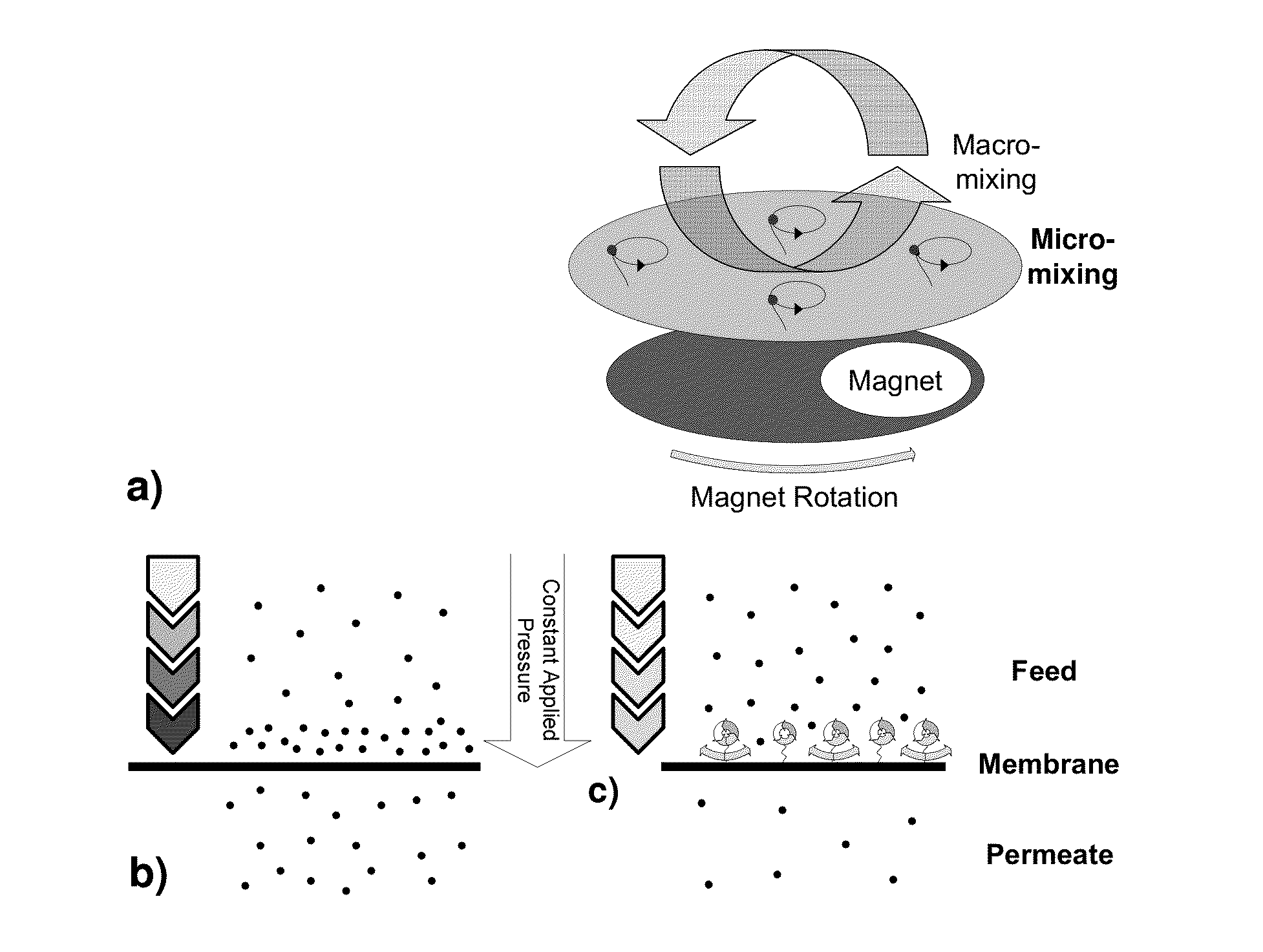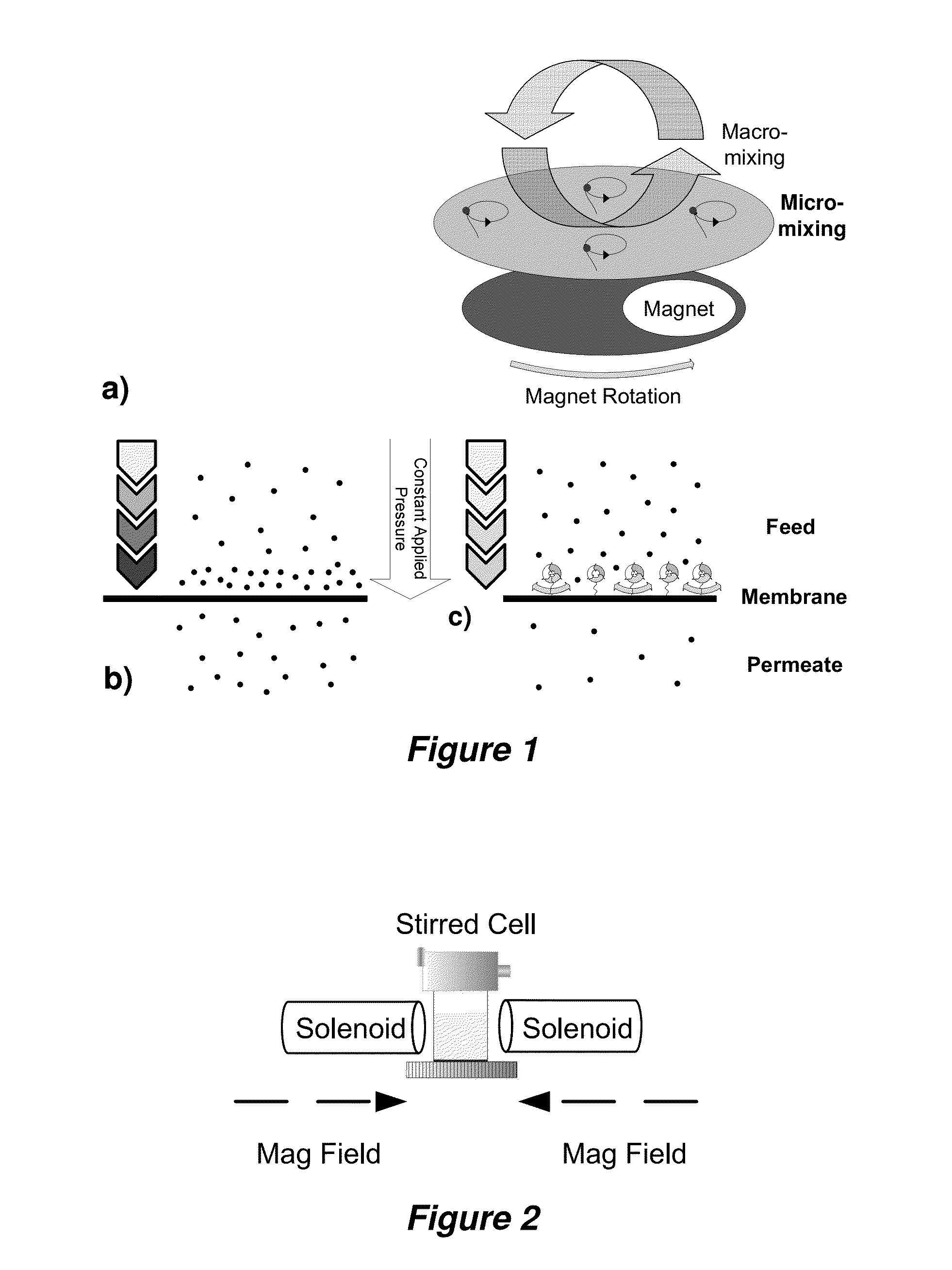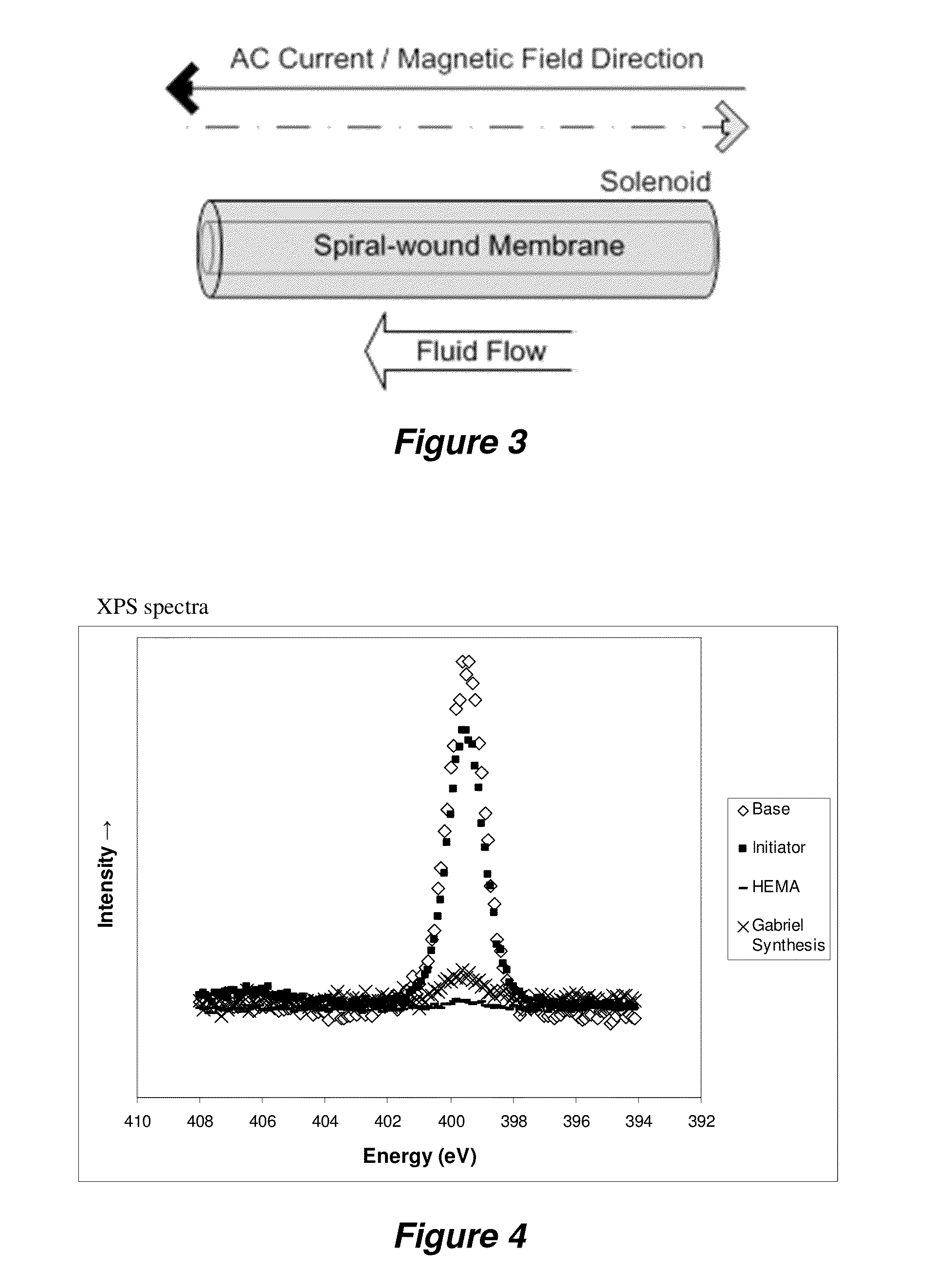Magnetically responsive membranes
a technology of magnetism and membranes, applied in the field of magnetism responsive membranes, can solve the problems of limited membrane selectivity, capacity and productivity, filtration membranes prone to fouling only having limited usefulness, and membrane fouling, so as to reduce the efficiency and effectiveness of filtration membranes, reduce concentration polarization and fouling, and reduce the effect of efficiency and effectiveness
- Summary
- Abstract
- Description
- Claims
- Application Information
AI Technical Summary
Benefits of technology
Problems solved by technology
Method used
Image
Examples
example 1
Magnetically Responsive Micromixing Membranes
[0164]Hydrophilic polymers were grafted on the surface of commercially available nanofiltration (NF) and microfiltration (MF) membranes. Specifically, PET 400 MF membranes and NF 270 membranes were modified as described below. The monomers used for grafting included 2-hydroxyethylmethacrylate (HEMA), tert-butylmethacrylate (TBMA), and acrylic acid (AA). Di-blocks of HEMA-TBMA were also investigated. Two polymerization grafting methods were used included atom transfer radical polymerization (ATRP) and UV-initiated free radical polymerization. Superparamagnetic nanoparticles were then covalently bonded to the end of the polymer brushes.
[0165]Initial Membrane Preparation.
[0166]Polyethylene terephthalate (PET) 400 microfiltration (MF) membranes and thin-film composite polyamide NF 270 NF membranes were obtained in sheet form. Membrane discs were cut from the larger membrane sheet using a hammer and dye. The MF membranes were washed with Milli...
example 2
Magnetically Responsive Micromixing Membranes
[0224]The synthesis and evaluation of magnetically responsive micromixing NF membranes is described in this example. Particle image velocimetry (PIV) confirmed that the movement of polymer brushes at certain magnetic field frequencies induces mixing directly above the membrane surface. Nanofiltration performance is significantly improved (increased flux and salt rejection) with the magnetically responsive membranes by a rotating magnetic field because of reduced concentration polarization in the boundary layer.
[0225]A CPU-controlled alternating magnetic field apparatus consisting of two solenoids was constructed as described below. The membrane was placed inside a stirred filtration cell and the cell was placed in between the two solenoids so that the membrane barrier (topmost) layer was normal to the magnetic field generated along the longitudinal axis of the solenoids (see FIG. 1c). Because the brushes are concentrated on the membrane s...
example 3
Magnetic Field Responsive Nanofiltration Membranes
[0281]Base, thin film composite, nanofiltration membranes were modified using surface initiated atom transfer radical polymerization to graft poly(2-hydroxyethyl methacrylate) (polyHEMA) chains to the surface of the membrane. A modified Gabriel synthesis procedure was used to attach superparamagnetic (Fe3O4) nanoparticles to the chain ends, as described in Example 2. Chain density and chain length were independently varied by adjusting the initiator density and polymerization time.
[0282]The performance of modified membranes was investigated by determining deionized water fluxes. Permeate fluxes and salt rejection were also analyzed for aqueous feed streams containing 500 ppm CaCl2 and 2000 ppm MgSO4. Each experiment was conducted in dead-end mode. Modified membranes displayed a reduced permeate flux and increased salt rejection compared to unmodified membranes. Because both grafted chain density and chain length affect membrane perfo...
PUM
 Login to View More
Login to View More Abstract
Description
Claims
Application Information
 Login to View More
Login to View More - R&D
- Intellectual Property
- Life Sciences
- Materials
- Tech Scout
- Unparalleled Data Quality
- Higher Quality Content
- 60% Fewer Hallucinations
Browse by: Latest US Patents, China's latest patents, Technical Efficacy Thesaurus, Application Domain, Technology Topic, Popular Technical Reports.
© 2025 PatSnap. All rights reserved.Legal|Privacy policy|Modern Slavery Act Transparency Statement|Sitemap|About US| Contact US: help@patsnap.com



